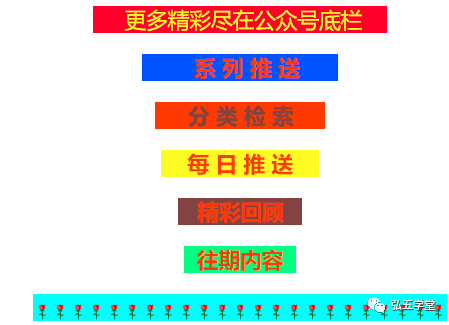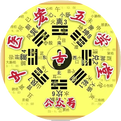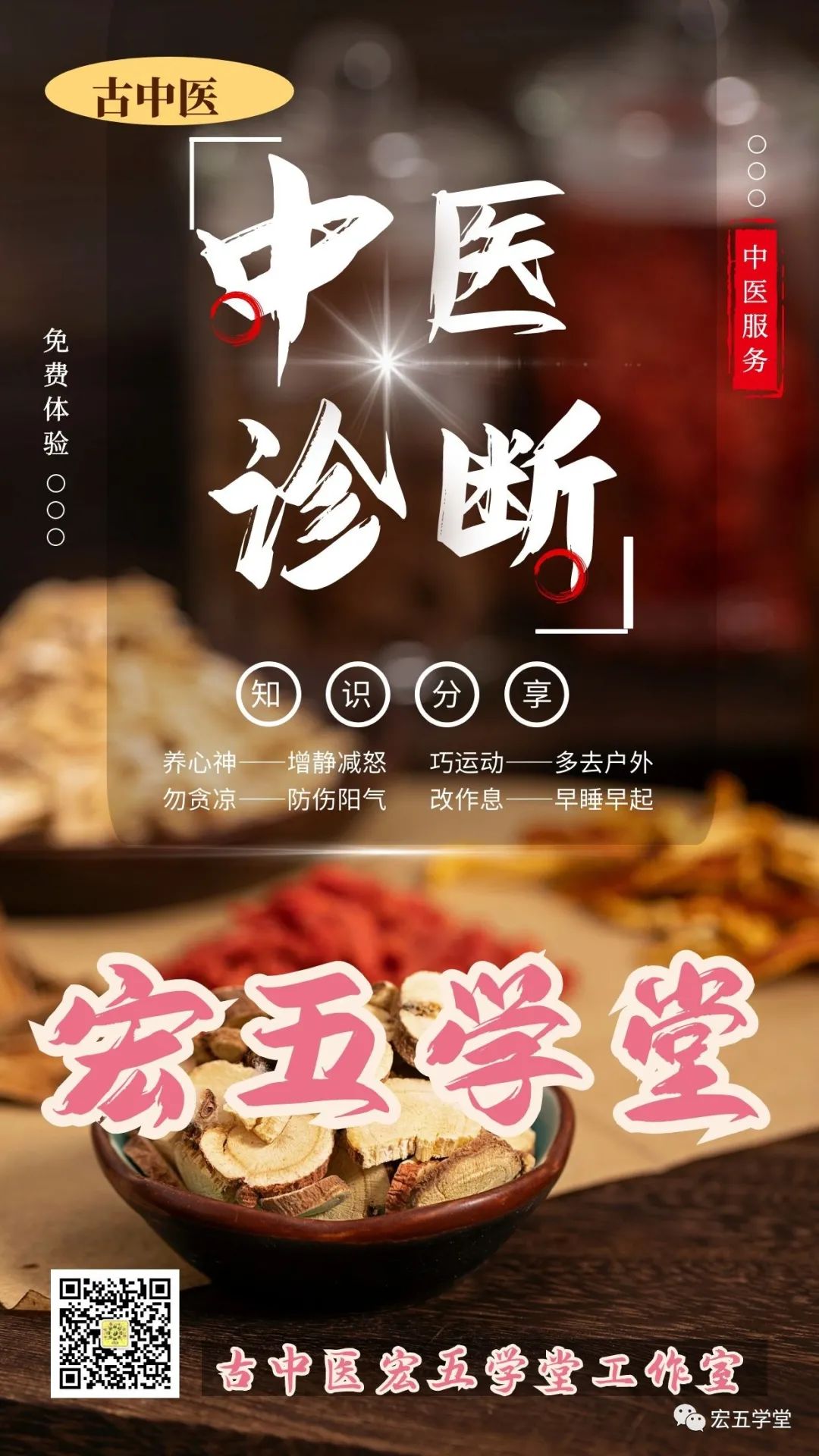
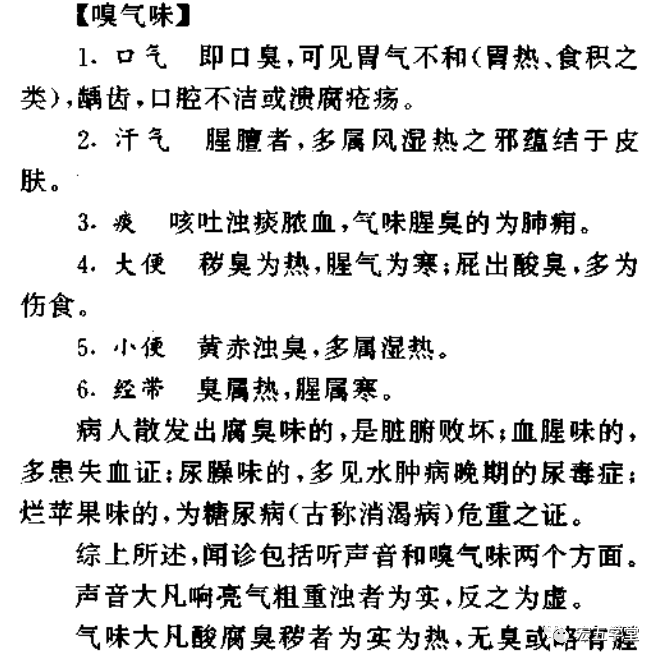
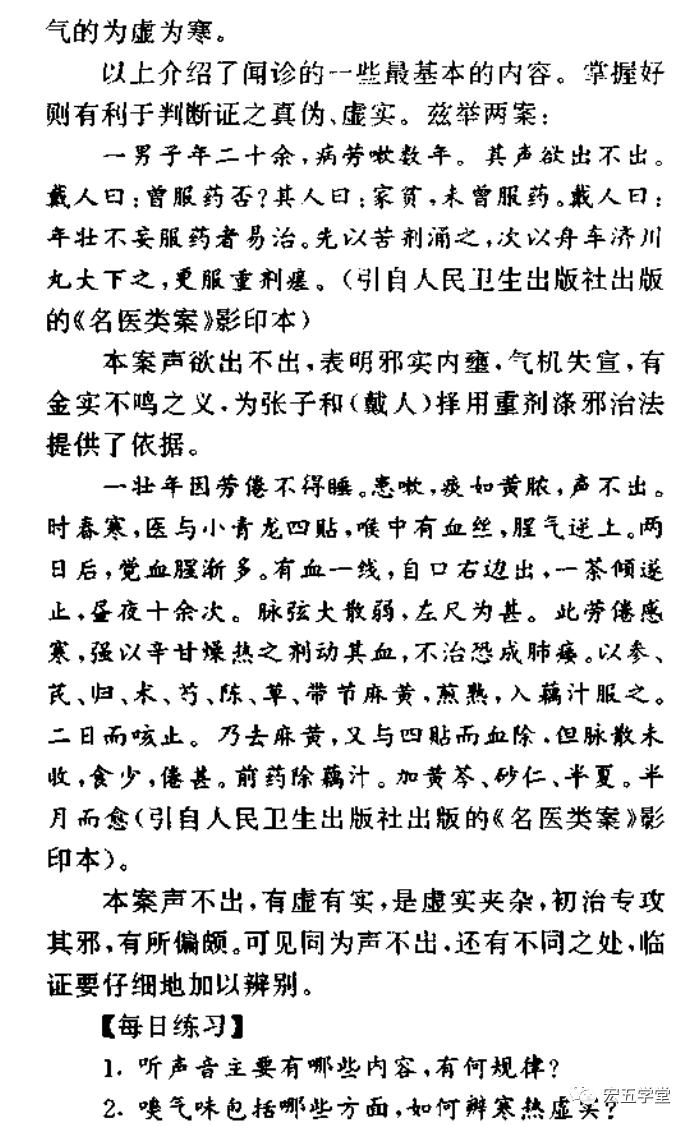
【嗅气味】 (Olfactory Diagnosis)
1. 口气 (Halitosis) indicates disharmony of stomach qi (stomach heat, food stagnation, etc.), dental caries, poor oral hygiene, or ulcerative lesions.
2. 汗气 (Sweat Odor) with a fishy smell often indicates the accumulation of wind-damp-heat evil in the skin.
3. 痰 (Phlegm) coughing up turbid phlegm with pus and blood, having a foul smell, indicates lung abscess.
4. 大便 (Stool) foul-smelling indicates heat, fishy smell indicates cold; sour-smelling gas often indicates food stagnation.
5. 小便 (Urine) yellow, turbid, and foul-smelling often indicates damp-heat.
6. 经带 (Vaginal Discharge) foul-smelling indicates heat, fishy indicates cold.
Patients emitting a putrid smell indicate organ decay; a bloody smell often indicates blood loss; a urine odor indicates late-stage uremia; a rotten apple smell indicates severe diabetes (historically known as “Xiao Ke disease”). In summary, olfactory diagnosis includes both auditory and olfactory aspects. Loud and coarse sounds indicate excess, while soft sounds indicate deficiency. Foul and rotten smells indicate excess heat, while no smell or slight fishy smell indicates deficiency and cold.
The above introduces some of the most basic content of olfactory diagnosis. Mastering these concepts is beneficial for determining the authenticity and nature of syndromes. Here are two case studies:
A man in his twenties has suffered from a cough for several years. His voice is strained and barely audible. The physician asked, “Have you taken any medicine?” The man replied, “I am poor and have not taken any medicine.” The physician said, “A young man who has not taken medicine is easy to treat. First, use a bitter remedy to induce vomiting, then use the Zhuo Che Qing Chuan Wan (Zhuo Che Qing Chuan Pill) for a strong purge, and then administer a heavy dose for recovery.” (From the reprinted edition of “Famous Physician Cases” published by the People’s Health Publishing House)
This case shows that the strained voice indicates internal obstruction due to excess evil. The qi mechanism is obstructed, and the sound not being produced indicates the need for heavy doses to expel the evil.
A young man could not sleep due to fatigue. He had a cough with yellow purulent phlegm and a strained voice. It was early spring and cold; the physician prescribed Xiao Qing Long (Minor Blue Dragon Decoction) in four doses. There were blood streaks in his throat, and a fishy smell was rising. After two days, he noticed an increase in bloody sputum. Blood came from the right side of his mouth, and after a tea was poured, it stopped, but he coughed day and night over ten times. The pulse was wiry, large, and weak, with the left wrist being more pronounced. This fatigue-induced cold required warming and drying remedies to move the blood; otherwise, it could lead to lung atrophy. The physician used Ren Shen (Ginseng), Huang Qi (Astragalus), Gui (Cinnamon), Bai Zhu (White Atractylodes), Shao Yao (Peony), Chen Pi (Aged Tangerine Peel), Gan Cao (Licorice), and Dai Jie Ma Huang (Dai Jie Ephedra), decocted with lotus root juice. After two days, the cough stopped. The Ma Huang was removed, and four doses were given again, and the blood was eliminated, but the pulse remained scattered and weak, with little appetite and severe fatigue. The previous medicine was removed except for the lotus root juice, and Huang Qin (Scutellaria), Sha Ren (Amomum), and Ban Xia (Pinellia) were added. After half a month, he recovered. (From the reprinted edition of “Famous Physician Cases” published by the People’s Health Publishing House).
This case shows that the voice not being produced indicates a mix of deficiency and excess. The initial treatment focused on expelling the evil, which was somewhat biased. It can be seen that even with the same symptom of a voice not being produced, there are different underlying conditions, and careful differentiation is necessary in clinical practice.
【每日练习】 (Daily Practice)
1. What are the main contents of listening to sounds, and what are the patterns?
2. What aspects does olfactory diagnosis include, and how do you differentiate between cold and heat, deficiency and excess?

Link Review
《百日学中医诊断》1.1 中医诊断学及其主要内容《百日学中医诊断》1.2 学习中医诊断学的重要性《百日学中医诊断》1.3. 中医诊断学的特点和原则《百日学中医诊断》1.4. 学习中医诊断的方法《百日学中医诊断》1.5. 四诊之一望诊①【望神】《百日学中医诊断》1.5. 四诊之一望诊②【望面色】《百日学中医诊断》1.5. 四诊之一望诊③【常色和病色】《百日学中医诊断》1.6. 四诊之一望诊④【望形态,姿态】《百日学中医诊断》1.6. 四诊之一望诊⑤【望五官】《百日学中医诊断》1.6. 四诊之一望诊⑥【望皮肤】《百日学中医诊断》1.6. 四诊之一望诊⑦【望络脉】《百日学中医诊断》1.7. 四诊之一望诊⑧【望舌】《百日学中医诊断》1.7. 四诊之一望诊⑨【望舌要点及舌主病】《百日学中医诊断》1.8. 一周内容复习《百日学中医诊断》2.1. 闻诊 闻声音
